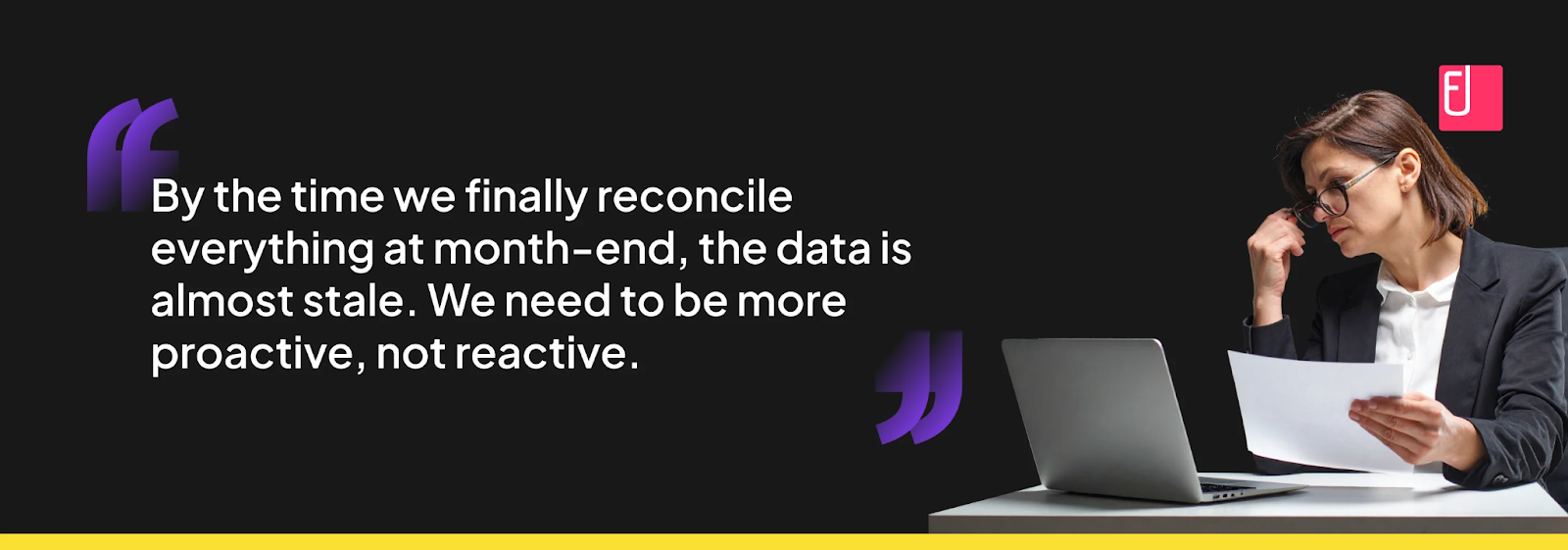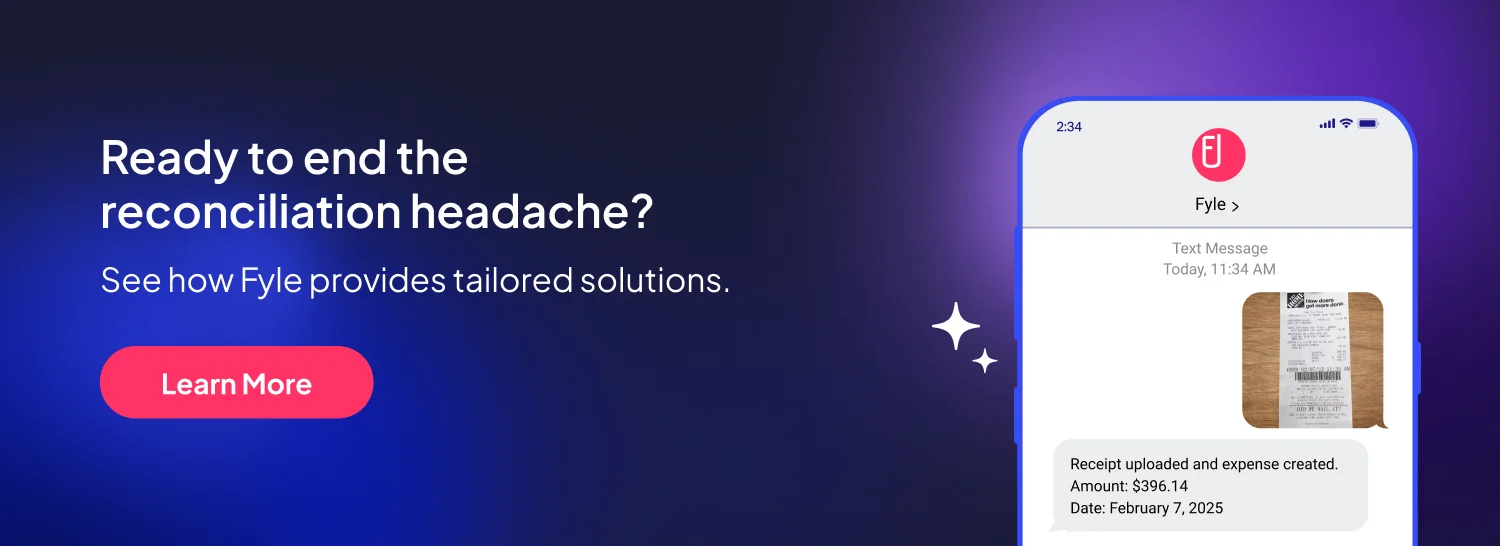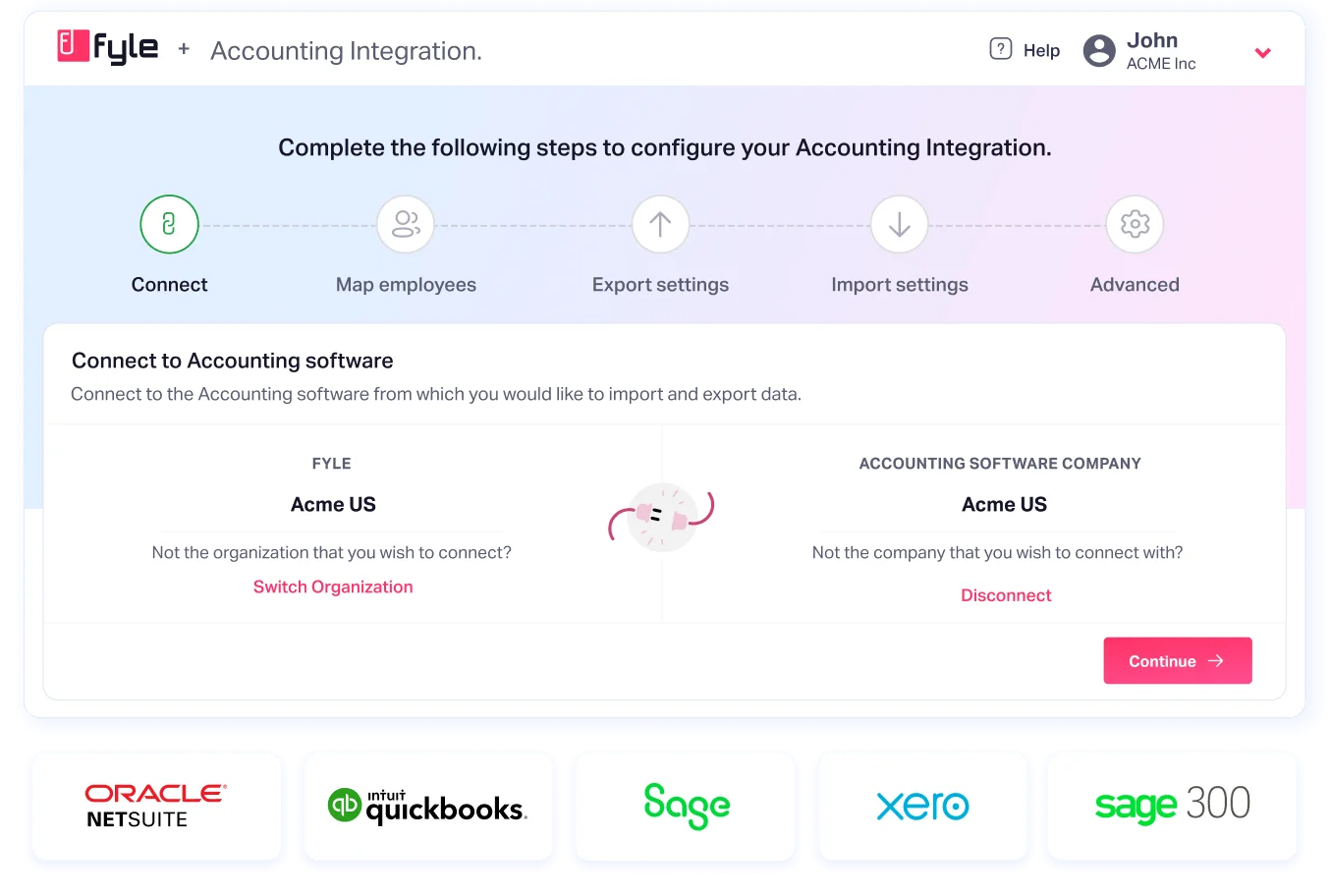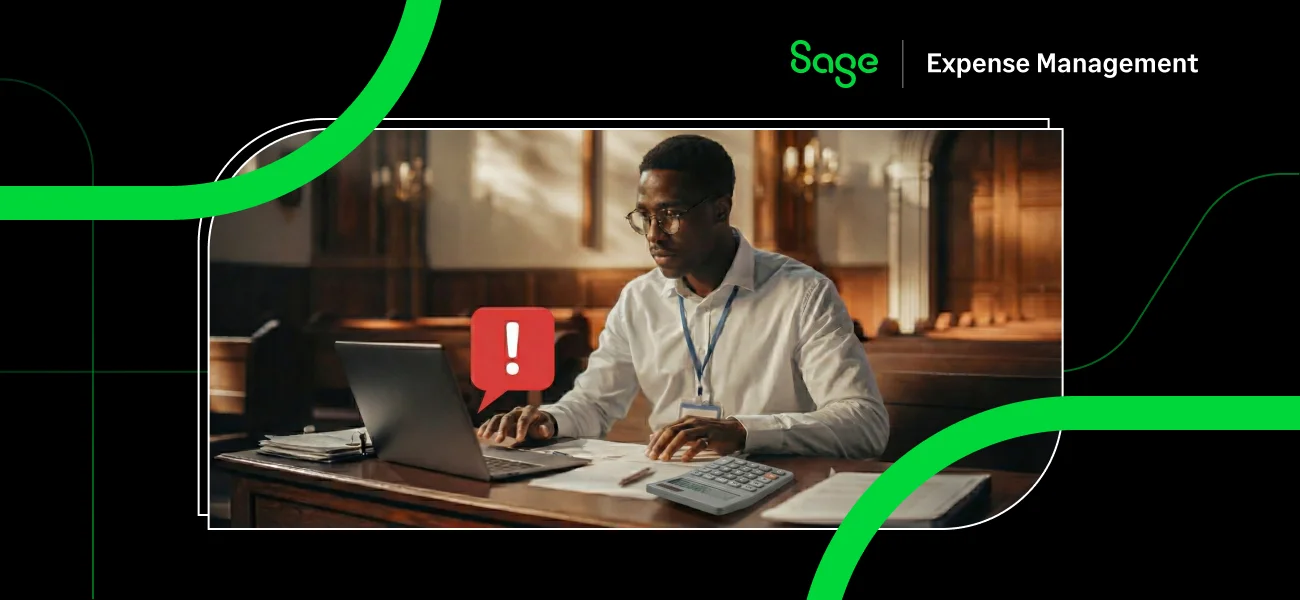The month-end close can feel like a battle against the clock. But no task is more universally dreaded than manual credit card reconciliation. The moment the statements arrive, the scramble begins: chasing down missing receipts, deciphering cryptic line items, and wrestling with endless spreadsheets.
This process is more than just a monthly nuisance; it's a significant operational bottleneck. Customers often describe their reconciliation process as a hot mess and admit that everybody dreads receiving the credit card statements because they are so time-consuming.
If this sounds familiar, you know that this manual grind is one of the biggest headaches in finance—one that costs your team time, accuracy, and sanity.
The True Cost of Manual Credit Card Reconciliation
Relying on a manual process for credit card reconciliation is one of the most common triggers for seeking an automated solution. The inefficiencies create tangible problems that impact the entire business.
It's Incredibly Time-Consuming
The traditional reconciliation process can take 5-6 hours for a single statement. Your team must wait for delayed transaction data from the bank, manually match each line item to a receipt, request explanations from employees, and then key all the information into your accounting software. This tedious work takes valuable time away from more strategic financial analysis and planning.

It's Riddled with Costly Errors
Manual data entry is prone to errors. A recent study found that about 20% of expense reports contain errors, and fixing them costs an additional $50 per report. These mistakes, from incorrect coding to duplicate entries, compromise the accuracy of your financial data and can create serious compliance issues during an audit.
It Causes a Cascade of Delays
A slow reconciliation process doesn't happen in a vacuum—it delays everything else. It can delay the month-end close, which means leadership is making decisions based on outdated reports. This lack of real-time visibility makes it impossible to track budgets proactively and identify potential overspending before it’s too late.
Also Read
Why Manual Reconciliation is a Major Hurdle Across Industries
While the reconciliation headache is universal, the specific consequences of a slow, manual process are felt differently depending on your industry. Understanding these unique challenges is crucial to fully grasping the impact on your business.
Construction
In the construction industry, project profitability is paramount. Every expense must be accurately allocated to a specific project and cost code to ensure budgets are on track.
Manual reconciliation is simply too slow; by the time expenses are reconciled at the end of the month, a project could already be significantly over budget. This lack of real-time tracking and the risk of cost overruns make an automated system a critical need.
Non-Profit
For non-profits, financial transparency and donor trust are the currency of the realm. A disorganized, manual reconciliation process with missing receipts creates a messy and unreliable audit trail. This can jeopardize grant compliance and damage the organization's reputation with stakeholders who need to see exactly how their funds are being managed.
IT & Tech
Fast-scaling tech companies often have distributed teams and a high volume of digital expenses, such as software subscriptions and cloud hosting fees. Manually reconciling hundreds of these recurring transactions is highly inefficient and doesn't provide the granular expense insights needed to control departmental SaaS spending or manage budgets effectively across a growing, global team.
SMBs and Mid-Market
For growing businesses, manual reconciliation is simply not scalable. A process that was manageable with five employees quickly becomes unmanageable as the company grows, turning into a major operational bottleneck that can overwhelm the accounting team and prevent the finance department from focusing on strategic initiatives.

How Sage Expense Management (formerly Fyle) Automates Reconciliation and Ends the Headache
Sage Expense Management is designed to eliminate the manual work of reconciliation and give you back control over your time.
Real-Time Feeds Eliminate the Wait

Sage Expense Management provides real-time transaction feeds by partnering directly with major credit card networks, including Visa and Mastercard. Instead of waiting days for bank feeds, you can track card spend as it happens. This instant transaction visibility means the reconciliation process can begin immediately, not at the end of the month.
AI-Powered Matching Does the Work for You

When an employee submits a receipt—whether through a simple text message (SMS), an email from their Gmail or Outlook inbox, or the mobile app—Sage Expense Management's AI-powered engine automatically scans it and matches it to the corresponding transaction.
This automates the most tedious part of reconciliation, slashing manual effort and time spent, and reducing a process that took hours to under 2 minutes.
Direct Integration Closes the Final Loop

Once expenses are reconciled and approved in Sage Expense Management, they are automatically exported to your accounting software. We have deep, two-way integrations with QuickBooks Online, QuickBooks Desktop, Sage Intacct, Xero, and NetSuite, ensuring all your coded data flows seamlessly into your general ledger.
This eliminates the final, error-prone step of manual data entry, helping you achieve a faster month-end close.
Reclaim Your Time with Automated Reconciliation
Manual reconciliation is a productivity-draining relic of the past. It costs your business time and money, introduces unnecessary risk, and keeps your finance team buried in low-value work. Sage Expense Management turns your biggest headache into a simple, automated, and continuous process.
Ready to trade hours of manual work for a two-minute reconciliation?
Schedule a demo to see how we can transform your expense management workflow.





.jpg)














